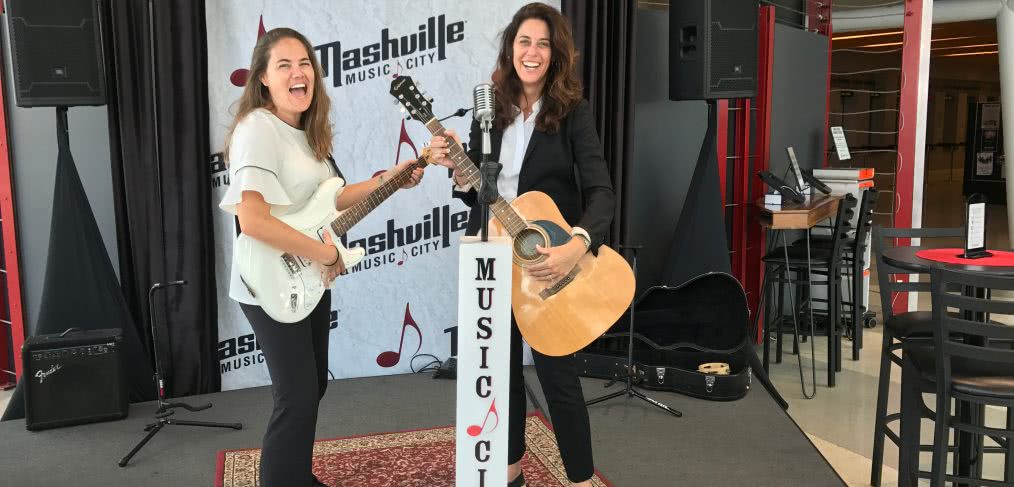
BOMA 2017: Co-working, Big Data and Happier Tenants
This June, CRTKL’s Jodi Williams and Jeanne Wood presented at the Building Owners and Managers Association International Conference and Expo. Here are some of the takeaways from their experience.
Presenting our research on the workplace of the future at BOMA 2017 was an incredible experience that was only made exponentially more enriching by the other sessions that we were able to attend.
A few sessions specifically gave us some interesting takeaways to use in our future projects. Below, we’ll discuss four meaningful talks that we attended and what they taught us.
Cultivating the Happy Tenant in a Multi-Generation Era
Melanie Colbert, SVP from LBA Realty; Kevin Devine, VP Engineering, Brookfield Properties; Katie Sakach, VP, Transwestern; Michael Wong, President, Genea
We can’t stop talking about the differences between generations. But can we design buildings in a way that keeps tenants happy, regardless of generation? This panel thought so. Clear communication, a focus on community and high-tech amenities will appeal to everyone. Using apps to streamline communication between landlord or facility manager and tenants can ease transitions and make it simpler to report issues, while tenant events, especially ones that are mission driven, help develop communities that cross company—and generation—lines.
The building and space must be accommodating to all end users. This can be done by providing concierge services, offering healthy food options, upgrading the lobby design with living walls and conducting maintenance over the weekends rather than in the evenings.
These suggestions can lead to happier tenants because, despite slight generational differences, we’re not really all that different after all.
Co-working: A Corporate Real Estate Perspective
Kay Sargeant, HOK
HOK and Corenet recently completed a co-working report that found that the key component of co-working is not actually work; its “taking care of people.” Less corporate and more caring, co-working is entering its teenage years according to the report. At the moment, less than 1% of space is dedicated to co-working, meaning it has a long way to go—and plenty of space to grow. In fact, it’s one of the fastest-growing sectors of the corporate real estate market.
Co-working spaces can re-invigorate properties for landlords and increase employee productivity. It’s also safer than working from home from a legal and HR perspective. But the growth of the sharing economy, a demand for better tech and amenities and a feeling of unlimited opportunity is what is really driving the co-working sector’s quick growth.
Real Disruption: How Technology is Changing and Challenging Commercial Real Estate
Steve Weikal, Head of Industry Relations, MIT Center for Real Estate
Did you know that MIT had a Center for Real Estate that produces market research and conducts seminars? We sure didn’t, so it was a pleasure to hear from Steve Weikal about real estate technology trends and the companies that are pioneering tech disruption in real estate.
It’s truly amazing how many technologies exist to help us do things like report on tenant comfort (CrowdComfort), connect tenants and buyers to buildings, create business models and appraisals and maintain and operate campuses. With the continued introduction of new tech, the way we do commercial real estate today will be unrecognizable in just a few years.
How Big Data and Analytics are Transforming Real Estate Operations
Patrick Tyrrell, COO Vornado Realty Trust (DC) and Eddie Dunlap, SVP Engineering Vornado
In the same city as our own office, Vornado has a centralized buildings operations center to run HVAC systems for their broad portfolio of buildings in the D.C. metro area. Using this centralized system, they are able to better control costs, negotiate energy purchases and monitor trends.
More recently, Vornado has opened operations centers for security and technology. Combined with the buildings center, Vornado is able to collect, synthesize and utilize data from its portfolio of buildings to better serve its clients and the environment.
The centers even serve as a marketing tool. In a day when “big data” is the buzz phrase du jour, allowing tenants, executives and consumers to view their processes and tour their centers offers a transparency that builds trust and improves relationships.
